
Hollywood and Vine, the intersection of Hollywood Boulevard and Vine Street in Hollywood, a district of Los Angeles, became known in the 1920s for its concentration of radio and movie-related businesses. The Hollywood Walk of Fame is centered on the intersection.
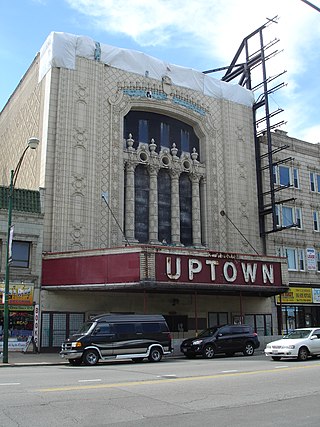
A movie palace is any of the large, elaborately decorated movie theaters built between the 1910s and the 1940s. The late 1920s saw the peak of the movie palace, with hundreds opening every year between 1925 and 1930. With the advent of television, movie attendance dropped, while the rising popularity of large multiplex chains in the 1980s and 1990s signaled the obsolescence of single-screen theaters. Many movie palaces were razed or converted into multiple-screen venues or performing arts centers, though some have undergone restoration and reopened to the public as historic buildings.
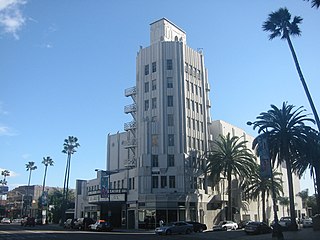
The Saban Theatre is a historic theatre in Beverly Hills, California, formerly known as the Fox Wilshire Theater. It is an Art Deco structure at the southeast corner of Wilshire Boulevard and Hamilton Drive designed by architect S. Charles Lee and is considered a classic Los Angeles landmark. The building was listed on the National Register of Historic Places on April 3, 2012.

The Pellissier Building and adjoining Wiltern Theatre is a 12-story, 155-foot (47 m) Art Deco landmark at the corner of Wilshire Boulevard and Western Avenue in Los Angeles, California. The entire complex is commonly referred to as the Wiltern Center. Clad in a blue-green glazed architectural terra-cotta tile and situated diagonal to the street corner, the complex is considered one of the finest examples of Art Deco architecture in the United States. The Wiltern building is owned privately, and the Wiltern Theatre is operated by Live Nation's Los Angeles division.

Broadway, until 1890 Fort Street, is a thoroughfare in Los Angeles County, California, United States. The portion of Broadway from 3rd to 9th streets, in the Historic Core of Downtown Los Angeles, was the city's main commercial street from the 1910s until World War II, and is the location of the Broadway Theater and Commercial District, the first and largest historic theater district listed on the National Register of Historic Places (NRHP). With twelve movie palaces located along a six-block stretch of Broadway, it is the only large concentration of movie palaces left in the United States.
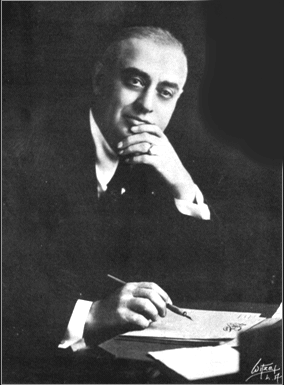
Alexander Pantages was a Greek American vaudeville impresario and early motion picture producer. He created a large and powerful circuit of theatres across the Western United States and Canada.

Benjamin Marcus Priteca was a Scottish architect. He is best known for designing theatres for Alexander Pantages.
Anthony Heinsbergen was a Dutch American muralist considered the foremost designer of North American movie theatre interiors.

Warnors Theatre is a historic theater located in downtown Fresno, California. The 2,100-seat venue opened in 1928 as the Pantages Theater, after the name of its then owner, Alexander Pantages, and later, the Warner Theater in 1929 after it was purchased by Warner Brothers. The name was changed again in the 1960s to "Warnors" to avoid trademark issues.

The Hollywood Pantages Theatre, formerly known as RKO Pantages Theatre, is located at Hollywood and Vine in the Hollywood neighborhood of Los Angeles, California, United States. Designed by architect B. Marcus Priteca, it was the last theater built by the vaudeville impresario Alexander Pantages. The palatial Art Deco theater opened on June 4, 1930, as part of the Pantages Theatre Circuit.

The Broadway Theater District in the Historic Core of Downtown Los Angeles is the first and largest historic theater district listed on the National Register of Historic Places (NRHP). With twelve movie palaces located along a six-block stretch of Broadway, it is the only large concentration of movie palaces left in the United States. The same six-block stretch of Broadway, and an adjacent section of Seventh Street, was also the city's retail hub for the first half of the twentieth century, lined with large and small department stores and specialty stores.
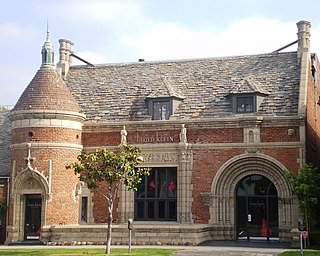
The Heinsbergen Decorating Company Building, also known as the AT Heinsbergen & Company Building, is a historic building on Beverly Boulevard in Los Angeles, California, United States. It was listed on the National Register of Historic Places in 1984.
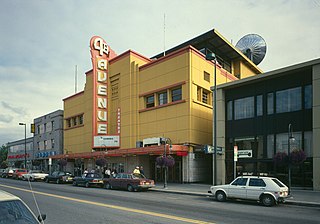
The Fourth Avenue Theatre, also known as the Lathrop Building, was a movie theater in Anchorage, Alaska that has been described as Art Deco, Streamline Moderne, and Art Moderne in style. Built beginning in 1941 and completed in 1947 after a halt during World War II, somewhat after the heyday of these styles, it was a large 960-seat first-run theater until the 1980s.
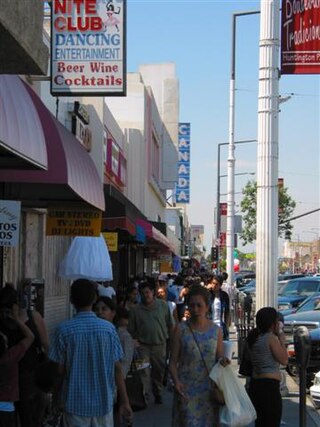
Pacific Boulevard is a street and principal commercial thoroughfare in the city of Huntington Park, California and the Los Angeles County neighborhood of Walnut Park. It runs from Vernon and Santa Fe Avenues in Vernon to Cudahy Street in Walnut Park before changing to Long Beach Boulevard. The Pacific Boulevard commercial district is the third highest grossing commercial district in the County of Los Angeles. The Christmas Lane Parade, seen in millions of homes via television throughout the United States and parts of Europe, has run down Pacific Boulevard since 1946. As many as 300,000 people attend the annual Carnaval Primavera held on Pacific Boulevard each year. Pacific Boulevard is well known to Latino residents of the L.A. area, and a magnet for commerce, culture, and night life.

Walker & Eisen (1919−1941) was an architectural partnership of architects Albert R. Walker and Percy A. Eisen in Los Angeles, California.
The following is a general historical timeline of the city of Los Angeles, California in the United States of America.

Hollywood Boulevard Commercial and Entertainment District consists of twelve blocks between the 6200 and 7000 blocks of Hollywood Boulevard in Los Angeles. This strip of commercial and retail businesses is recognized for its historical significance and was entered into the National Register of Historic Places in 1984.
The Fairfax Theatre is a mixed-use Art Deco style building constructed in 1930. The building is located in Los Angeles' Fairfax District on the northwest corner of Fairfax Ave, and Beverly Blvd. In 2021, the Fairfax Theatre was added to the list of Los Angeles Historic-Cultural Monuments, and declared eligible for the National Register of Historic Places. The building is recognized both for its importance to the Jewish heritage of the Fairfax district as well as for its Art Deco architecture.




















